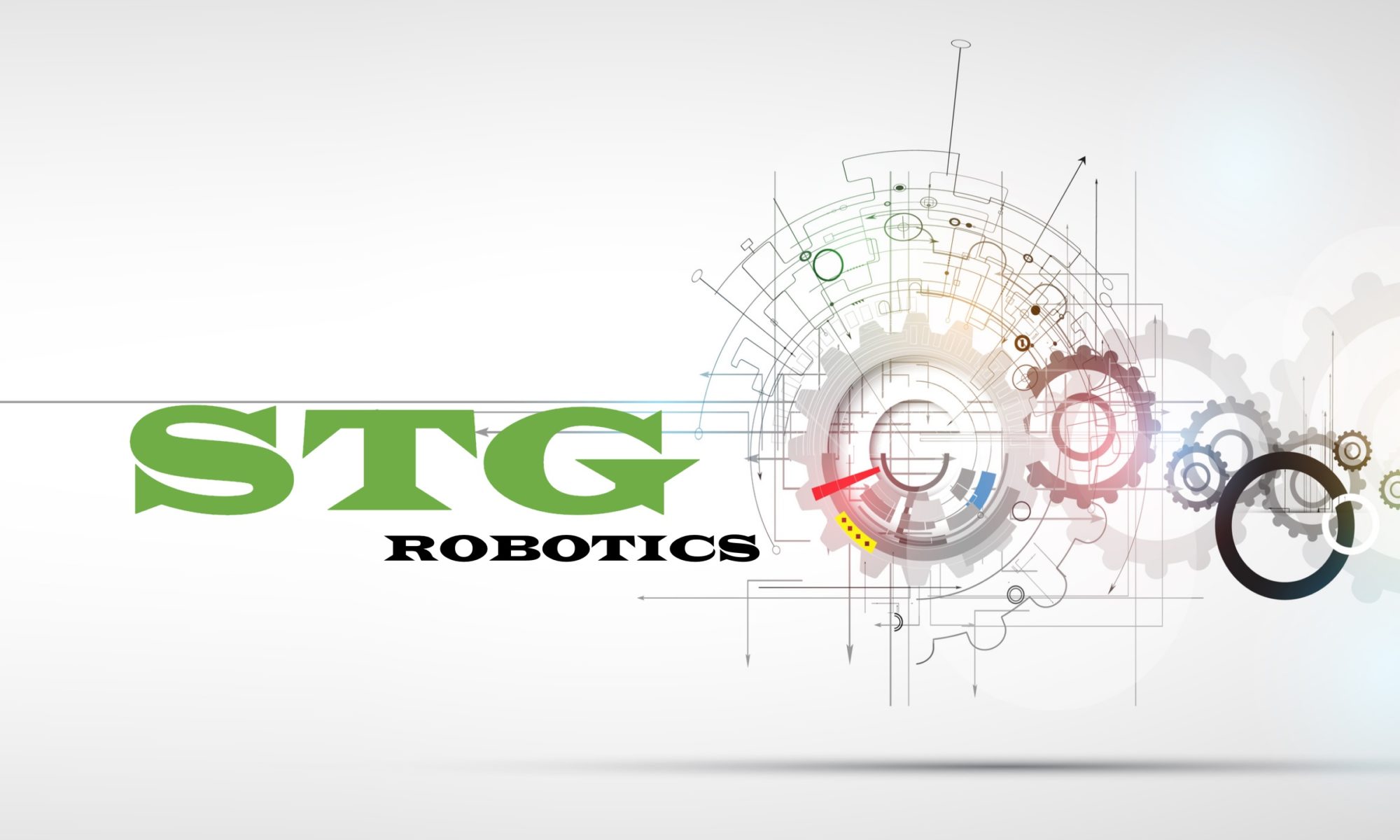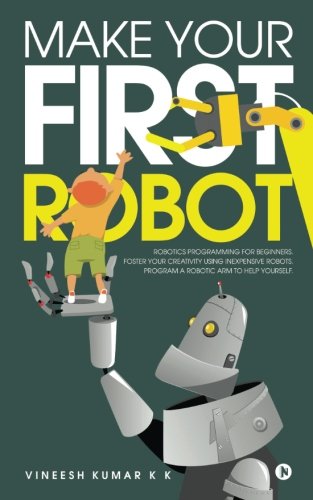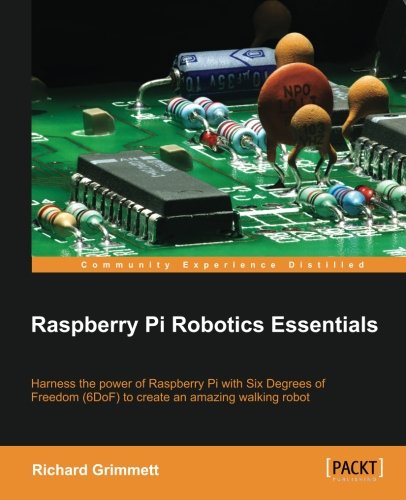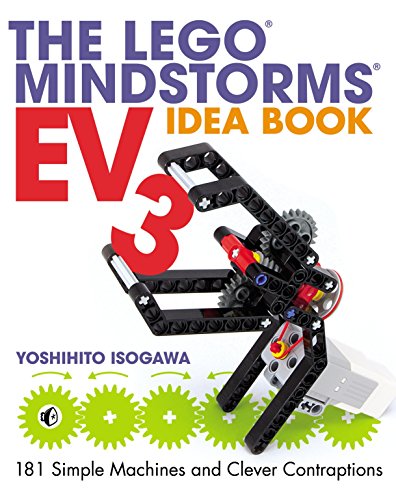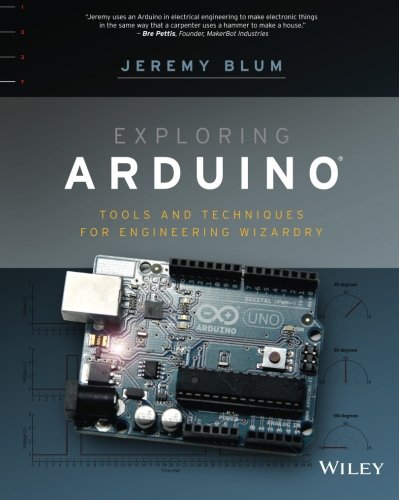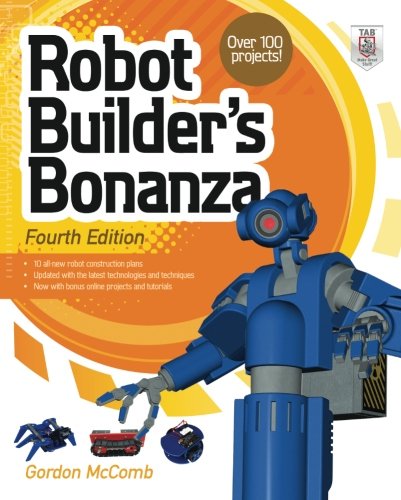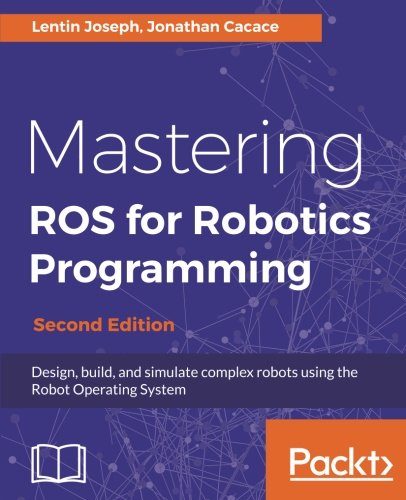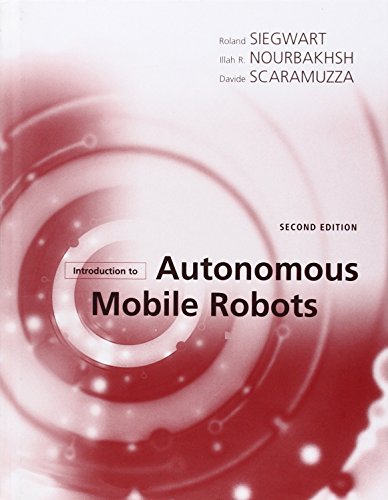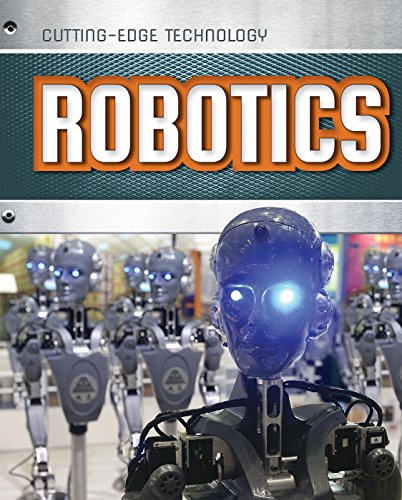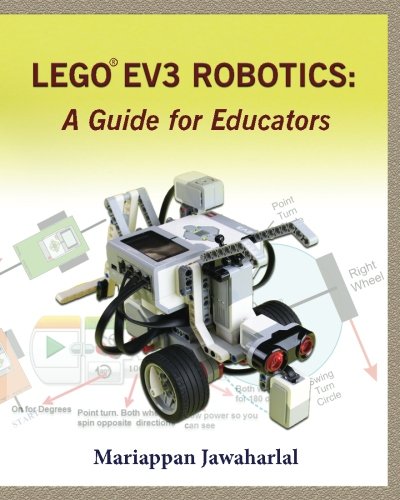Make your First Robot will help students to build and program their first robot using Arduino. It starts with an introduction of the hardware and software required to build and program the robots. The concepts are explained with simple analogies. Detailed explanation of the functionalities and programming of each hardware component are given. Integration of all the hardware components and programs to make a fully functional robot is explained for a mini Path-finder and Robotic Arm. Inexpensive components are used to build these robots. This book will flourish your imagination to the next level of robotics.
Raspberry Pi Robotics Essentials
Harness the power of Raspberry Pi with Six Degrees of Freedom (6DoF) to create an amazing walking robot
About This Book
- Construct a two-legged robot that can walk, turn, and dance
- Add vision and sensors to your robot so that it can “see” the environment and avoid barriers
- A fast-paced, practical guide with plenty of screenshots to develop a fully functional robot
Who This Book Is For
If you are a programmer with an interest in building advanced robotics projects using inexpensive hardware and open source software, then this book is for you. Some experience with computer programming and implementing simple mechanical systems is required.
What You Will Learn
- Build a basic biped platform, a servo-based robot that can walk
- Add Six Degrees of Freedom (6DoF) to your robot and make it free to move forward/backward, up/down, and left/right
- Add vision through a webcam so that the biped can “see” the world around it
- Implement path planning so that the biped can move around autonomously
- Add wireless communication so that you can see what the robot is seeing and control the robot from a distance
In Detail
The Raspberry Pi B2 is an inexpensive embedded processor that provides a high-performance Linux development environment.
This book is a fast-paced guide that will show you how to use Raspberry Pi technology to build a biped robot that can interact with its environment. We start off by explaining the basics of getting your Raspberry Pi up and running, ready to be mounted on your biped platform. After this, you will be introduced to the art of constructing a mechanism for the biped platform. You will then learn to develop a vision system for your robot, as well as a means by which you can control and monitor it. At the end of this book, you will have learned enough to build a complex biped robot that can walk, turn, find its way, and “see” its environment.
The LEGO MINDSTORMS EV3 Idea Book: 181 Simple Machines and Clever Contraptions
The LEGO® MINDSTORMS® EV3 Idea Book explores dozens of creative ways to build amazing mechanisms with the LEGO MINDSTORMS EV3 set. Each model includes a list of the required parts, minimal text, and colorful photographs from multiple angles so you can re-create it without the need for step-by-step instructions.
You’ll learn to build cars with real suspension, steerable crawlers, ball-shooters, grasping robotic arms, and other creative marvels. Each model demonstrates simple mechanical principles that you can use as building blocks for your own creations.
Best of all, every part you need to build these machines comes in one LEGO set (#31313)!
Exploring Arduino
Learn to easily build gadgets, gizmos, robots, and more usingArduino
Written by Arduino expert Jeremy Blum, this unique book uses thepopular Arduino microcontroller platform as an instrument to teachyou about topics in electrical engineering, programming, andhuman-computer interaction. Whether you’re a budding hobbyist or anengineer, you’ll benefit from the perfectly paced lessons that walkyou through useful, artistic, and educational exercises thatgradually get more advanced. In addition to specific projects, thebook shares best practices in programming and design that you canapply to your own projects. Code snippets and schematics will serveas a useful reference for future projects even after you’vemastered all the topics in the book.
- Includes a number of projects that utilize differentcapabilities of the Arduino, while interfacing with externalhardware
- Features chapters that build upon each other, tying in conceptsfrom previous chapters to illustrate new ones
- Includes aspects that are accompanied by video tutorials andother multimedia content
- Covers electrical engineering and programming concepts,interfacing with the world through analog and digital sensors,communicating with a computer and other devices, and internetconnectivity
- Explains how to combine smaller topics into more complexprojects
- Shares downloadable materials and source code for everythingcovered in the book
- Projects compatible with many official Arduino boards includingArduino Uno; Arduino Leonardo; Arduino Mega 2560; Arduino Due;Arduino Nano; Arduino Mega ADK; LilyPad Arduino and may work withArduino-compatible boards such as Freeduino and new third partycertified boards such as the Intel Galileo
Exploring Arduino takes you on an adventure andprovides you with exclusive access to materials not found anywhereelse!
The LEGO MINDSTORMS EV3 Discovery Book: A Beginner’s Guide to Building and Programming Robots
Begin with the basics as you build and program a simple robot to experiment with motors, sensors, and EV3 programming. Then you’ll move on to a series of increasingly sophisticated robots that will show you how to work with advanced programming techniques like data wires, variables, and custom-made programming blocks. You’ll also learn essential building techniques like how to use beams, gears, and connector blocks effectively in your own designs.
Master the possibilities of the EV3 set as you build and program:
- The EXPLOR3R, a wheeled vehicle that uses sensors to navigate around a room and follow lines
- The FORMULA EV3 RACE CAR, a streamlined remote-controlled race car
- ANTY, a six-legged walking creature that adapts its behavior to its surroundings
- SK3TCHBOT, a robot that lets you play games on the EV3 screen
- The SNATCH3R, a robotic arm that can autonomously find, grab, lift, and move the infrared beacon
- LAVA R3X, a humanoid robot that walks and talks
More than 150 building and programming challenges throughout encourage you to think creatively and apply what you’ve learned to invent your own robots. With The LEGO MINDSTORMS EV3 Discovery Book as your guide, you’ll be building your own out-of-this-world creations in no time!
Requirements: One LEGO MINDSTORMS EV3 set (LEGO SET #31313)
Robot Builder’s Bonanza, 4th Edition
Publisher’s Note: Products purchased from Third Party sellers are not guaranteed by the publisher for quality, authenticity, or access to any online entitlements included with the product.
The Bestselling Robotics Book–Now with New Projects and Online Tools!
“Amazing…should be required reading for any budding robot builder!” -GeekDad, Wired.com
Have fun while learning how to design, construct, and use small robots! This richly illustrated guide offers everything you need to know to construct sophisticated, fully autonomous robots that can be programmed from your computer. Fully updated with the latest technologies and techniques, Robot Builder’s Bonanza, Fourth Edition includes step-by-step plans that take you from building basic motorized platforms to giving the machine a brain–and teaching it to walk, talk, and obey commands.
This robot builder’s paradise is packed with more than 100 affordable projects, including 10 completely new robot designs. The projects are modular and can be combined to create a variety of highly intelligent and workable robots of all shapes and sizes. Mix and match the projects to develop your own unique creations. The only limit is your imagination!
Robot Builder’s Bonanza, Fourth Edition covers:
- Parts, materials, and tools
- Building motorized wooden, plastic, and metal platforms
- Rapid prototyping methods
- Drafting bots with computer-aided design
- Constructing high-tech robots from toys
- Building bots from found parts
- Power, motors, and locomotion
- Robots with wheels, tracks, and legs
- Constructing robotic arms and grippers
- Robot electronics and circuit making
- Computers and electronic control
- Microcontrollers–Arduino, PICAXE, and the BASIC stamp
- Remote control systems
- Sensors, navigation, and visual feedback
- Robot vision via proximity, light, and distance
New! FREE online content at:
www.robotoid.com
- My First Robot tutorial lessons
- Project parts finder
- Animated, interactive learning tools
- How-to videos, robot e-plans, bonus articles, links, and more
Plus, go to:
www.mhprofessional.com/rbb4 for:
- Downloadable programs
- RBB app notes
- Bonus chapters
Make Great Stuff!
TAB, an imprint of McGraw-Hill Professional, is a leading publisher of DIY technology books for makers, hackers, and electronics hobbyists.
Mastering ROS for Robotics Programming – Second Edition: Design, build, and simulate complex robots using the Robot Operating System
Discover best practices and troubleshooting solutions when working on ROS
Key Features
- Develop complex robotic applications using ROS to interface robot manipulators and mobile robots
- Gain insight into autonomous navigation in mobile robots and motion planning in robot manipulators
- Discover best practices and troubleshooting solutions
Book Description
In this day and age, robotics has been gaining a lot of traction in various industries where consistency and perfection matter. Automation is achieved via robotic applications and various platforms that support robotics. The Robot Operating System (ROS) is a modular software platform to develop generic robotic applications. This book focuses on the most stable release of ROS (Kinetic Kame), discusses advanced concepts, and effectively teaches you programming using ROS.
We begin with aninformative overview of the ROS framework, which will give you a clear idea of how ROS works. During the course of this book, you’ll learn to build models of complex robots, and simulate and interface the robot using the ROS MoveIt! motion planning library and ROS navigation stacks. Learn to leverage several ROS packages to embrace your robot models.
After covering robot manipulation and navigation, you’ll get to grips with the interfacing I/O boards, sensors, and actuators of ROS. Vision sensors are a key component of robots, and an entire chapter is dedicated to the vision sensor and image elaboration, its interface in ROS and programming. You’ll also understand the hardware interface and simulation of complex robots to ROS and ROS Industrial.
At the end of this book, you’ll discover the best practices to follow when programming using ROS.
What you will learn
- Create a robot model with a seven-DOF robotic arm and a differential wheeled mobile robot
- Work with Gazebo and V-REP robotic simulator
- Implement autonomous navigation in differential drive robots using SLAM and AMCL packages
- Explore the ROS Pluginlib, ROS nodelets, and Gazebo plugins
- Interface I/O boards such as Arduino, robot sensors, and high-end actuators
- Simulate and motion plan an ABB and universal arm using ROS Industrial
- Explore the latest version of the ROS framework
- Work with the motion planning of a seven-DOF arm using MoveIt!
Who This Book Is For
If you are a robotics enthusiast or researcher who want to learn more about building robot applications using ROS, this book is for you. In order to learn from this book, you should have a basic knowledge of ROS, GNU/Linux, and C++ programming concepts. The book is also excellent for programmers who want to explore the advanced features of ROS.
Table of Contents
- Introduction to ROS and Its Package Management
- Getting started with ROS programming
- Working with 3D Robot Modeling in ROS
- Simulating Robots Using ROS and Gazebo
- Simulating Robots Using ROS and V-REP
- Using the ROS MoveIt! And Navigation Stack
- Working with Pluginlib, Nodelets, and Gazebo Plugins
- Writing ROS Controllers and Visualization Plugins
- Interfacing I/O Boards, Sensors, and Actuators to ROS
- Programming Vision Sensors using ROS, Open-CV, PCL and AR Marker Tracking
- Building and Interfacing Differential Drive Mobile Robot Hardware in ROS
- Exploring the Advanced Capabilities of ROS-MoveIt!
- Using ROS in Matlab and Simulink
- ROS for Industrial Robots
- Troubleshooting and Best Practices in ROS
Introduction to Autonomous Mobile Robots (Intelligent Robotics and Autonomous Agents series)
The second edition of a comprehensive introduction to all aspects of mobile robotics, from algorithms to mechanisms.
Mobile robots range from the Mars Pathfinder mission’s teleoperated Sojourner to the cleaning robots in the Paris Metro. This text offers students and other interested readers an introduction to the fundamentals of mobile robotics, spanning the mechanical, motor, sensory, perceptual, and cognitive layers the field comprises. The text focuses on mobility itself, offering an overview of the mechanisms that allow a mobile robot to move through a real world environment to perform its tasks, including locomotion, sensing, localization, and motion planning. It synthesizes material from such fields as kinematics, control theory, signal analysis, computer vision, information theory, artificial intelligence, and probability theory. The book presents the techniques and technology that enable mobility in a series of interacting modules. Each chapter treats a different aspect of mobility, as the book moves from low-level to high-level details. It covers all aspects of mobile robotics, including software and hardware design considerations, related technologies, and algorithmic techniques.
This second edition has been revised and updated throughout, with 130 pages of new material on such topics as locomotion, perception, localization, and planning and navigation. Problem sets have been added at the end of each chapter. Bringing together all aspects of mobile robotics into one volume, Introduction to Autonomous Mobile Robots can serve as a textbook or a working tool for beginning practitioners.
Curriculum developed by Dr. Robert King, Colorado School of Mines, and Dr. James Conrad, University of North Carolina-Charlotte, to accompany the National Instruments LabVIEW Robotics Starter Kit, are available. Included are 13 (6 by Dr. King and 7 by Dr. Conrad) laboratory exercises for using the LabVIEW Robotics Starter Kit to teach mobile robotics concepts.
Robotics (Cutting-Edge Technology)
Every day, robots become a bigger part of our lives. From the robots vacuuming our homes to self-scanning machines at the supermarket, robots do jobs faster than humans and often with fewer mistakes. This book takes a look at the amazing developments in robotic technology, from the early days of robots to the varied landscape of robotics we see today. Readers will learn the differences between robots being developed to look just like humans and the complex thinking machines designed to play chess or build cars, and explore the potential future robots have to change the world.
LEGO EV3 Robotics: A Guide for Educators
Lego® EV3 Robotics: A Guide for Educators provides a structured approach to teaching robotics to K-12 students. Robotics is a multi-disciplinary subject and teaching robotics can be challenging. Most robotics teachers come from very diverse educational backgrounds: Mathematics, Physics, English, History, and even Physical Education. They need an easy to use, comprehensive guide to give them a solid foundation. This book provides a structured curriculum, from learning to use correct engineering terms to mastering advanced programming techniques. It provides clear explanations, fun examples, challenging missions and sample codes. This curriculum guide covers everything needed to inspire and engage students. It also contains tips for classroom management and interaction with students. The best way to begin robotics is to build and program robots. Any individual who is interested in teaching robotics can go through this guide and follow the instructions to build and program robots. Instructions for an easy-to-build robot, MyBot, are included. For educators, parents, mentors and coaches interested in teaching EV3 robotics, this is the only book that you will ever need.
